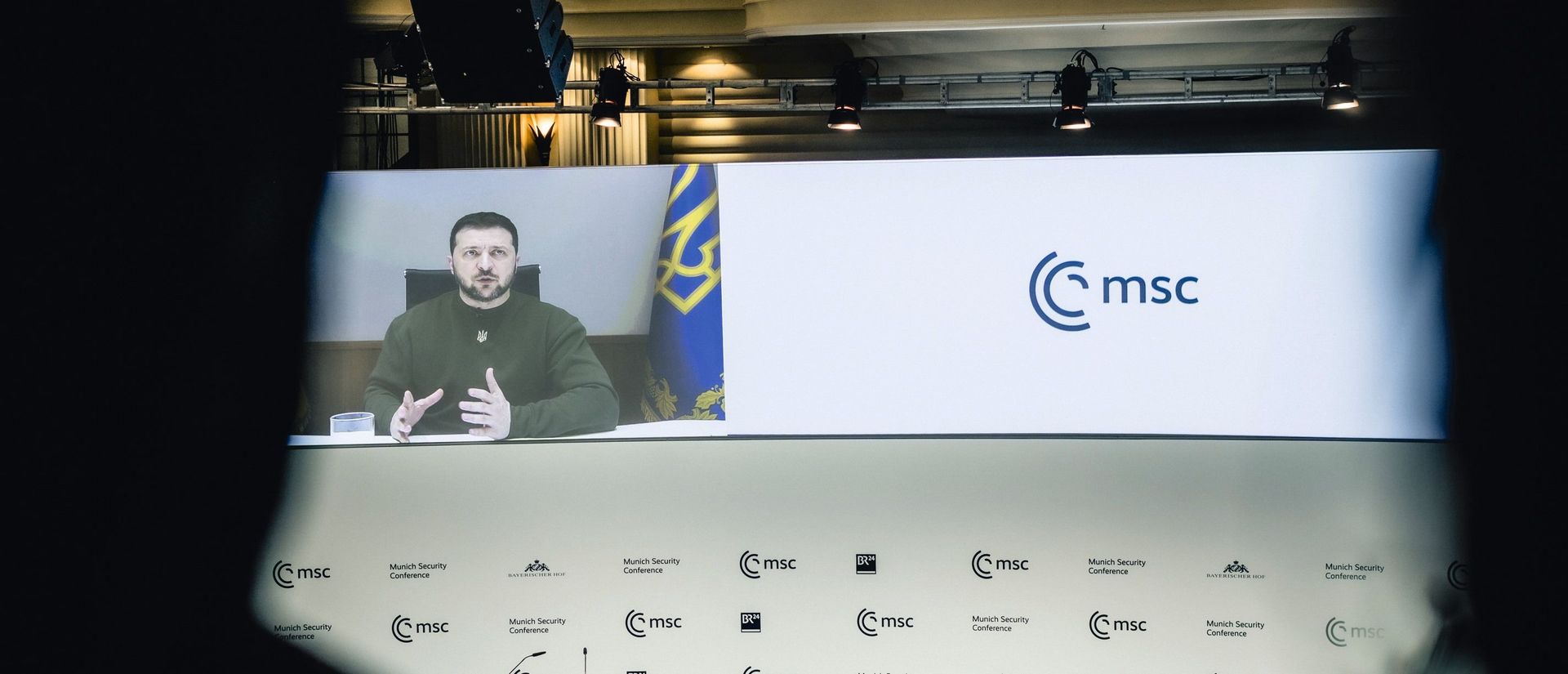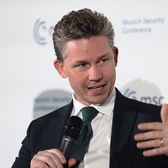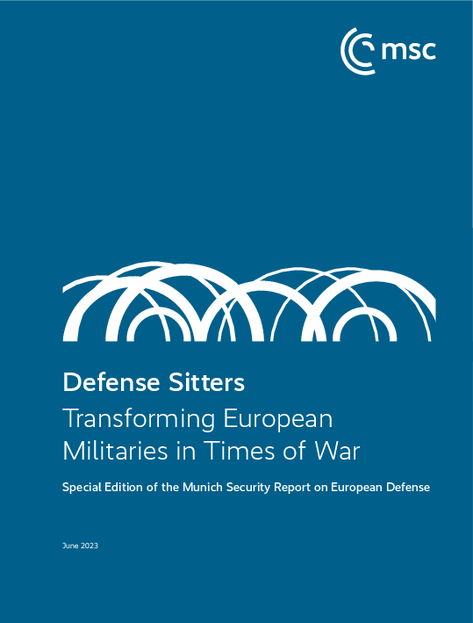

This Time It’s Different?
Introduction
 AuthorNicole Koenig
AuthorNicole Koenig AuthorLeonard Schütte
AuthorLeonard Schütte
 AuthorNicole Koenig
AuthorNicole Koenig AuthorLeonard Schütte
AuthorLeonard Schütte
European states want to spend more on defense – at last. Russia’s war on Ukraine has exposed the dire state of most European armies, continental defense cooperation, and defense industrial capacity. Once national decisionmakers mustered the will to provide Ukraine with military equipment to defend itself against Russia’s aggression, many found tanks in disrepair, arsenals depleted, and armaments factories scaled back. Without substantial US aid, Kyiv would have likely fallen to Russian troops. While European states have markedly increased their provisions of equipment to Ukraine, much greater harm could have been averted with earlier action. And despite no improvement of the European, and indeed global, security environment in sight, Europeans are still stuck on the fence between the status quo ante and the required transformation of their defense cooperation. They need to come off this fence, resist national reflexes, and commit to a genuinely collective European approach to ensuring the security of the continent. The demand for joint action has hardly been higher.
European Defense Fragmentation: Symptoms and Sources
Since the end of the Cold War, Europeans have happily reaped peace dividends and significantly reduced their defense budgets. In many countries, national defense also suffered political neglect as a new era of peace and interdependence seemed imminent. Shocks such as Russia’s annexation of Crimea and invasion of Eastern Ukraine from 2014 onward, former President Trump’s threats of withdrawing US security guarantees, or Europe’s impotence during the withdrawal from Afghanistan failed to alter how Europe organized its defense. However, Europe’s defense malaise does not end with underspending. Above all, Europeans hardly cooperate on defense. The EU still essentially has 27 armies, 27 defense ministries, and 27 defense markets. This has caused costly duplications of military capabilities, weakened Europe’s defense technological and industrial base (EDTIB), and undermined the interoperability between national forces. In addition, the acrimonious Brexit negotiations led to the UK, one of Europe’s prime military powers, having no formal defense and security policy relationship with the EU.

Strong economic and military support from the EU are crucial to Ukraine’s chances of winning the war.[1]
Pål Jonson•Swedish Minister for Defense, Informal Meeting of EU Defense Ministers, March 7, 2023
The sources of Europe’s defense fragmentation lie deep.[2] Threat perceptions among Europeans have traditionally differed. While Central and Eastern European states had warned about Russian imperialist ambitions long before the war, many Western and Southern Europeans downplayed these concerns and focused on the MENA region and terrorism.[3] As a result, Europeans have struggled to both identify common priorities and build mutual trust, which are necessary for deeper defense cooperation. Differing strategic cultures – that is, views on the very purpose of armed forces, defense planning processes, or arms export regimes – have also exacerbated diverging threat perceptions across the continent, rendering joint planning and action even more difficult. Protectionist reflexes have furthermore undermined defense industrial cooperation, enabled by an EU treaty provision that allows national defense industries to be shielded from European competition. The US security umbrella has also given Europe a cushioning sense of stability. When Europeans have cooperated on developing equipment, projects have often been delayed, more expensive than planned, and divisive among partners.
The War as a Critical Juncture: New Path or End of the Road?
Russia’s war on Ukraine is a critical juncture for Europe. Decisions taken now will shape the course of European defense because spending decisions have lock-in effects that will bind European states to a certain path in the long term. With every decision taken on a national basis, collaboration becomes more, and eventually prohibitively, difficult.
By unleashing new political dynamics, the war could allow Europeans to overcome national reflexes and embark on a new path. They have not only converged in their perception of Russia as the primary threat to their security. European policymakers have also professed the political will to “invest more and better.”[4] Indeed, European publics, for the time being, support both objectives (Figure 1.1). Contrary to the credo that defense policy is too sensitive to pool, most EU citizens surveyed have expressed their support for deeper EU integration on defense, mirroring previous Eurobarometer surveys showing persistently high approval of European defense cooperation. The favorable attitudes toward increased spending are more striking and are likely caused by heightened threat perceptions. The prospect of Germany becoming a serious defense player, as proclaimed by Chancellor Scholz in his Zeitenwende speech, could also galvanize cooperation.
EU citizens’ views on defense policy, January–February 2023, percent
However, early evidence casts doubt on whether Europeans will turn the right way. There are already signs that some Europeans will not live up to their spending pledges announced with great fanfare. Germany’s failure to both meet NATO’s two percent goal in 2023 and credibly demonstrate that it will do so permanently thereafter are cases in point. The promise to spend better together and reduce European fragmentation is in doubt as well. Europe’s lack of preparedness means that the pressing military priorities are to replenish stocks, increase the readiness, and acquire new equipment as soon as possible. Inevitably, these short-term priorities are clashing with deeper European cooperation that would largely have medium to long-term benefits. Moreover, initial German and French reluctance to provide arms to Ukraine and impose severe sanctions on Russia has led to an erosion of trust among Central and Eastern European countries, which have consequently doubled down on their national defense approaches. The promises of rapid spending increases have also slowed incentives for industrial consolidation as arms companies around the Continent can expect full order books.
Transforming European Defense: EU as the Strategic Enabler for NATO
European policymakers therefore need to change course now to transform European defense. The prerequisite is that they increase and meet their spending pledges to be able to close some of the pressing capability gaps and meet NATO’s two percent goal (Chapter 2). Europeans then need to jointly identify and prioritize their capability needs, including by learning the lessons from Ukraine (Chapter 3). The Russian war against Ukraine has cemented NATO’s role as Europe’s primary standard-, demand-, and strategy-setter. It should therefore take the lead in identifying procurement priorities to close capability gaps – both old ones and new ones.
The EU, in turn, is the only organization that has meaningful funds available to incentivize cooperation on these joint priorities (Chapter 4). In addition, intergovernmental avant-garde groups can pave the way for joint procurement. The EU should also use its regulatory powers to work toward creating a single market for defense to overcome Europe’s defense industrial fragmentation. A transformation of European defense thus means that Europeans spend significantly more (together), plan more together, and procure more together. If EU, NATO, and intergovernmental initiatives dovetail, the EU can become the strategic enabler for NATO (Chapter 5).
Amid high-intensity warfare on the European continent and worsening global security environment, European defense needs a transformation. This time has to be different.

Defense Sitters — Munich Security Report Special Edition
Nicole Koenig, Leonard Schütte, Natalie Knapp, Paula Köhler, Isabell Kump, and Jintro Pauly, “Defense Sitters: Transforming European Militaries in Times of War,” Munich: Munich Security Conference, Special Edition of the Munich Security Report, June 2023, https://doi.org/10.47342/LIHA9331
Download PDF 2 MB- [1] Swedish Presidency of the Council of the European Union, “Video Message From Swedish Minister for Defence Pål Jonson,” Stockholm: Government of Sweden, 2023, perma.cc/K9UE-7APM.
- [2] Sean Monaghan, “Solving Europe’s Defense Dilemma: Overcoming the Challenges to European Defense Cooperation,” Washington, DC: CSIS, CSIS Briefs, March 2023, perma.cc/N3CR-72KY.
- [3] Hugo Meijer and Stephen G. Brooks, “Illusions of Autonomy: Why Europe Cannot Provide for Its Security If the United States Pulls Back,” International Security 45:4 (2021), 7–43, doi:10.1162/isec_a_00405.
- [4] European Council, “The Versailles declaration, 10 and 11 March 2022,” Press Release, March 11, 2022, perma.cc/37NK-87LX.